
Overview: While reading the story "Seven Fat Cats", students will listen and match the sounds (rhyming, beginning, ending, and vowel.)
- Subject:
- English Language Arts
- Speaking and Listening
- Material Type:
- Lesson Plan
- Date Added:
- 05/12/2021

Overview: While reading the story "Seven Fat Cats", students will listen and match the sounds (rhyming, beginning, ending, and vowel.)

The Basic Speller is a spelling program for beginning students and consists of eight volumes of 48 lessons each. It presents lessons and practice for learning the relationships between sounds and their spellings.
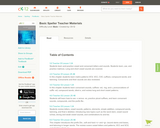
The Basic Speller is a spelling program for beginning students and consists of eight volumes of 48 lessons each. It presents lessons and practice for learning the relationships between sounds and their spellings.

Students will take a sequence of events or steps for some process and create an algorithm. This could apply to any content area. They will display the algorithm in flowchart form. This activity can be modified for all grade levels and content areas.
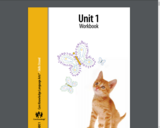
Student workbook pages for Core Knowledge Phonics instruction
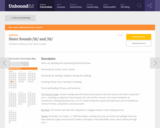
Students will learn /th/ sister sounds

Students will learn tricky words "said" and "says"; and /ng/ and /qu/

This guidance document helps teachers understand the why, as well as the concrete what and how, of the K-2 Reading Foundations Skills Block: the overall structure, how time is used within the hour of instruction, what students do during Whole Group instruction and during differentiated Small Group instruction and Independent work, how the design of the Skills block reflects grade level reading and language standards, what assessments look like, how the K-2 Skills Block supports and complements the work from the K-2 Language Arts Curriculum (module lessons and Labs), what a day in the Skills Block looks like, and Frequently Asked Questions.
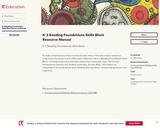
A single comprehensive resource that includes many of the documents needed to understand the design and to effectively implement the K-2 Reading Foundations Skills Block, including assessment overview, assessment conversion chart, Benchmark Assessments (teacher and student materials), Activity Bank, information on independent and small group work, syllabification guidance, handwriting guidance, and a glossary.
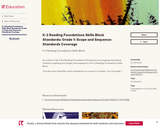
An outline of all of the Reading Foundations Standards and Language Standards (related to spelling) are taught and assessed in the K-2 Reading Foundations Skills Block. This document identifies which standards are covered in modules 1 to 4 of grade 2.
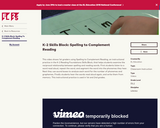
This video shows 1st graders using Spelling to Complement Reading, an instructional practice in the K-2 Reading Foundations Skills Block, that helps students examine the reciprocal relationship between spelling and reading words. First students listen to a word read aloud, repeat the word, and segment the word into the phonemes they hear. Next they use sound boxes to analyze each word for the number of phonemes and graphemes. Finally students hear the words read aloud again, and write them from memory. This instructional practice is used in 1st and 2nd grades.

This document provides a high-level overview of the Common Core State Standards, substandards, and associated EL-created learning targets explicitly taught and formally assessed in each of the four modules for a given grade level of the K-2 Reading Foundations Skills Block.

A collection of word lists by syllable type and phonics pattern based on Orton-Gillingham organization of six syllable types.
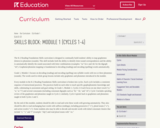
Grade 1: Module 1 of the EL Education K-2 Reading Foundations Skills Block, part of the EL Education K-8 Language Arts Curriculum. The Skills Block provides one hour of structured phonics instruction, to be taught alongside Module Lessons and Labs. For more information on getting started with the K-2 Reading Foundations Skills Block, visit https://curriculum.eleducation.org/about-skills-blocks.
To access this resource, you will need to create a free account for the system on which it resides. This partner uses such data for funding requests to keep their resource growing and up-to-date. Also, these resources are openly-licensed for editing and re-sharing, EXCEPT for certain copyright-protected content (authentic texts, photographs, etc.) within the materials that are from outside sources. This outside content may not be reproduced or distributed (outside the scope of fair use or the EL Education Curriculum Terms of Use) without additional permissions from the content owner.
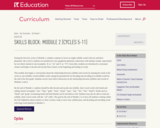
Grade 1: Module 2 of the EL Education K-2 Reading Foundations Skills Block, part of the EL Education K-8 Language Arts Curriculum. The Skills Block provides one hour of structured phonics instruction, to be taught alongside Module Lessons and Labs. For more information on getting started with the K-2 Reading Foundations Skills Block, visit https://curriculum.eleducation.org/about-skills-blocks.
To access this resource, you will need to create a free account for the system on which it resides. This partner uses such data for funding requests to keep their resource growing and up-to-date. Also, these resources are openly-licensed for editing and re-sharing, EXCEPT for certain copyright-protected content (authentic texts, photographs, etc.) within the materials that are from outside sources. This outside content may not be reproduced or distributed (outside the scope of fair use or the EL Education Curriculum Terms of Use) without additional permissions from the content owner.
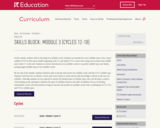
Grade 1: Module 3 of the EL Education K-2 Reading Foundations Skills Block, part of the EL Education K-8 Language Arts Curriculum. The Skills Block provides one hour of structured phonics instruction, to be taught alongside Module Lessons and Labs. For more information on getting started with the K-2 Reading Foundations Skills Block, visit https://curriculum.eleducation.org/about-skills-blocks.
To access this resource, you will need to create a free account for the system on which it resides. This partner uses such data for funding requests to keep their resource growing and up-to-date. Also, these resources are openly-licensed for editing and re-sharing, EXCEPT for certain copyright-protected content (authentic texts, photographs, etc.) within the materials that are from outside sources. This outside content may not be reproduced or distributed (outside the scope of fair use or the EL Education Curriculum Terms of Use) without additional permissions from the content owner.
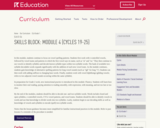
Grade 1: Module 4 of the EL Education K-2 Reading Foundations Skills Block, part of the EL Education K-8 Language Arts Curriculum. The Skills Block provides one hour of structured phonics instruction, to be taught alongside Module Lessons and Labs. For more information on getting started with the K-2 Reading Foundations Skills Block, visit https://curriculum.eleducation.org/about-skills-blocks.
To access this resource, you will need to create a free account for the system on which it resides. This partner uses such data for funding requests to keep their resource growing and up-to-date. Also, these resources are openly-licensed for editing and re-sharing, EXCEPT for certain copyright-protected content (authentic texts, photographs, etc.) within the materials that are from outside sources. This outside content may not be reproduced or distributed (outside the scope of fair use or the EL Education Curriculum Terms of Use) without additional permissions from the content owner.
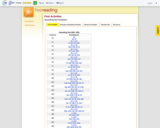
In Sounding Out activities, students take a regular word, such as sat, produce the letter-sound pattern "sssaaat," and blend to produce the word sat. This is a crucial development in learning to read, bringing together skills that students have spent many weeks working on and providing the first excitement of reading unaided. Being able to sound out regular words also provides students with a self-teaching capability: they can decode unaided words they do not yet recognize on sight.
The objective of the Sounding Out sequence of activities is to teach students to take a printed regular word and decode it by producing letter sounds and blending them.
You can start sounding out as soon as students:
(i) know enough letter sounds to form words from letters introduced three or more days ago, and
(ii) have mastered phoneme blending (see Phonological Awareness Activities)
For instance, if you're using the amsti letter-sound correspondence sequence (introducing a new letter-sound pair every two days, and having covered oral blending and segmenting skills), after five letter-sounds you could begin sounding out with words using letters a, m, and s (assuming i was today's letter and t was from two days ago)--so you might begin with am and Sam.
The practice words for sounding out were selected so that students will get to practice skills they have already acquired, at the same time receiving feedback and motivation from reading real words.
This strand of instruction was constructed on the following principles:
We start with simpler CVC patterns and establish them before moving to more difficult patterns. (See this article on CVC notation for an explanation of C~VC, C.VC, etc.)
Once a new CVC pattern has been established, but before introducing the next pattern, we mix in words from previous patterns to provide additional practice.
We put more emphasis on practicing sounding out with high-frequency words, such as put, must, get, him, and can.
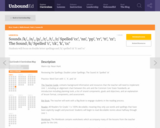
Students will focus on double letter spellings and /k/ spelled 'ck' 'k' and 'cc'
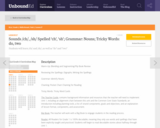
Students will learn /ch/ and /sh/; as well as "do" and "two"